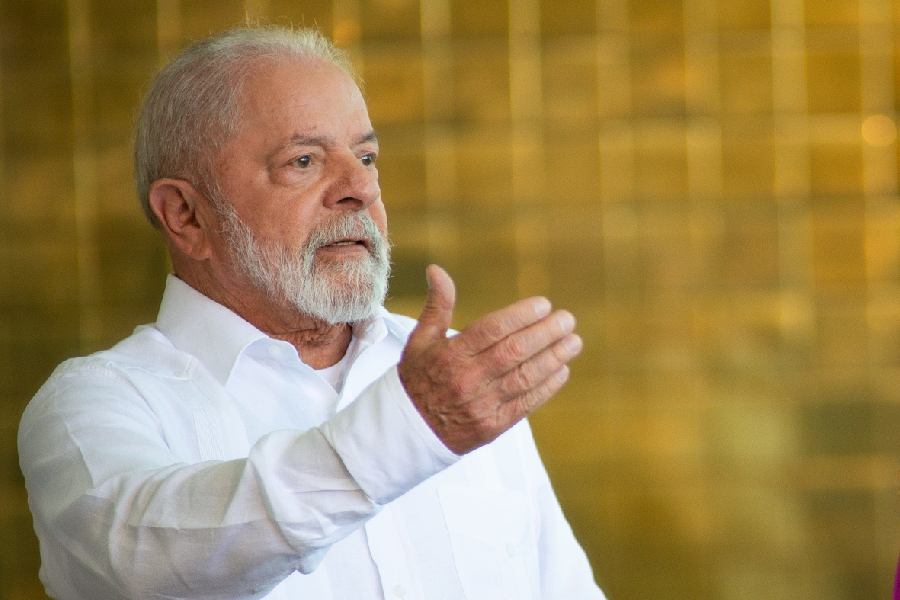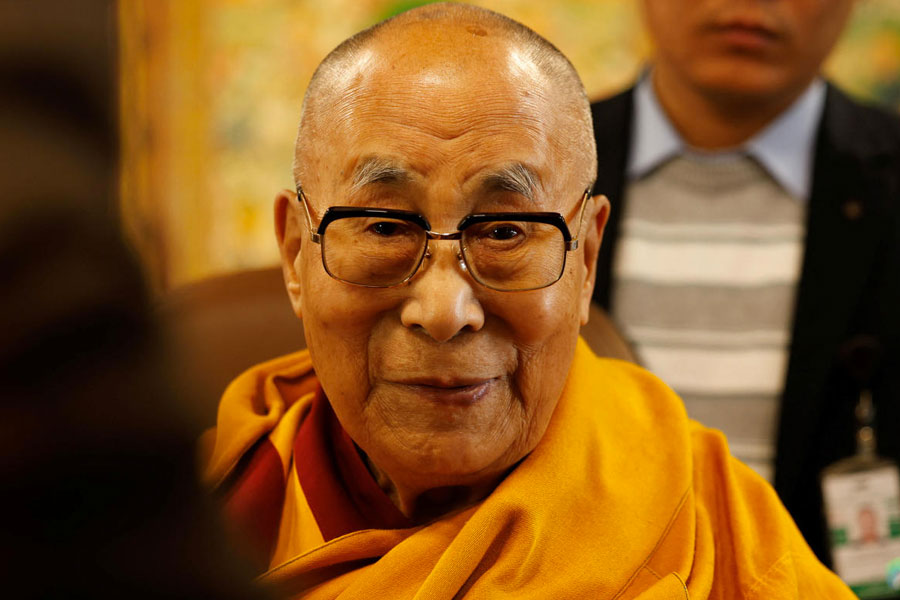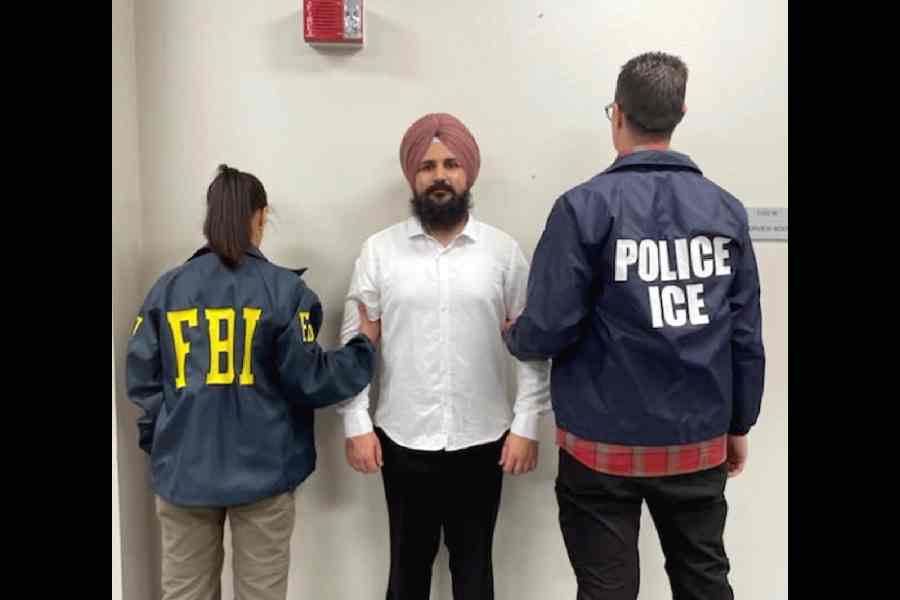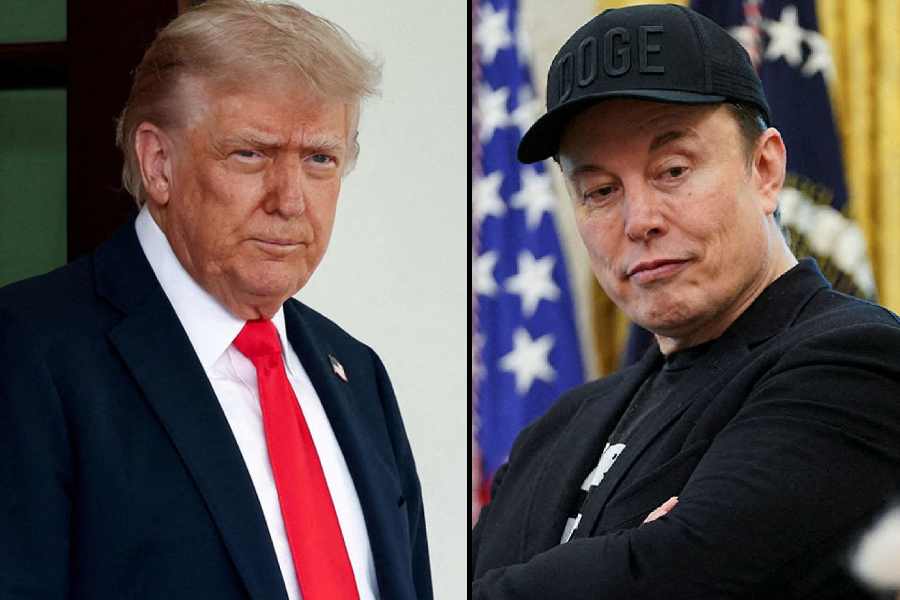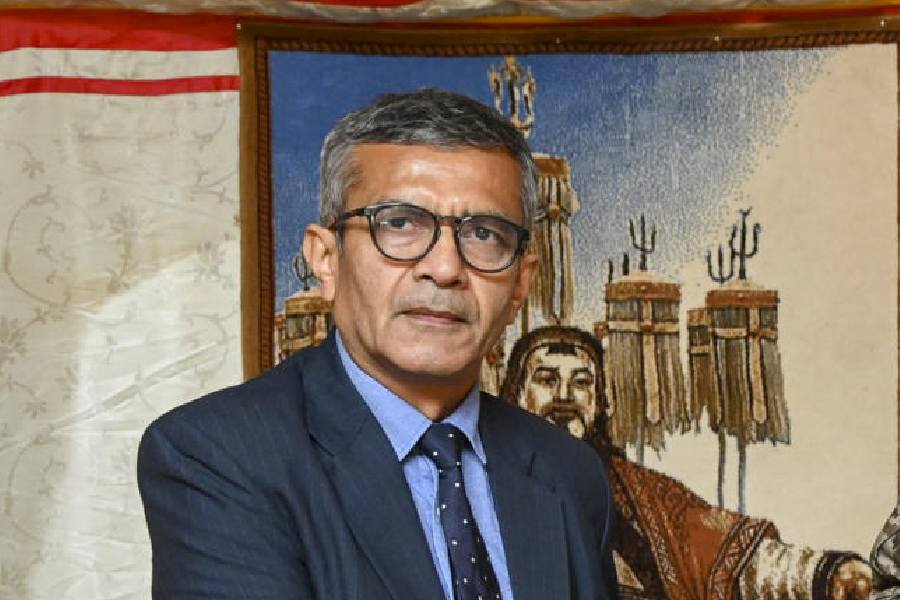 |
| I’m getting to a certain age where I don’t see myself doing any more big films within the context of the Hollywood system. I think I will be doing smaller films in future because I can take more risks — Martin Scorsese |
London, Dec. 13: ?When you talk to Marty,? said Leonardo DiCaprio, ?ask him any sort of question and see how he always manages to turn the answer into something related to film. He?s completely and utterly obsessed with cinema?.
It?s true. As DiCaprio well knows, having made two films with him and about to embark on a third, spending any time with Martin Scorsese is like having the front-row seat at an engrossing lecture by theworld?s foremost expert on all aspects of films, filmmaking and cinema history.
Undoubtedly the most prominent and influential filmmaker who has never won an Oscar ? he has been nominated four times ? 62-year-old Scorsese sprinkles his sentences with references to obscure films and talks with infectious enthusiasm about all aspects of filmmaking, from the use of colour to camera movement.
A dapper New Yorker, dressed in a dark suit and dark blue open-necked shirt, Scorsese is in Los Angeles for the premi?re of his latest film, The Aviator, about Hollywood tycoon, aviator and famed recluse Howard Hughes. Sitting on the edge of his chair, Scorsese talks in a rat-a-tat fashion almost without pause, sometimes interspersing lengthy discourses with guffaws of laughter.
His lifelong love of cinema began when he was an asthmatic young boy in Flushing, New York, unable to play with his schoolmates. ?I couldn?t run around, I couldn?t do anything, so my parents would always take me to the movies and park me there,? he recalls. ?They didn?t know what else to do with me and I loved it.?
It was there that he first saw the films that made such an impression on him and forged his career: Jimmy Cagney in Public Enemy and White Heat, Orson Welles in Citizen Kane, Jean Renoir?s Rules of the Game and many others, little seen these days but remembered vividly by Scorsese.
Although his own early films were rooted in his own experience, exploring his Italian-American heritage, he has gone on to encompass a variety of themes. For his latest ? and possibly, he says, his last ? big-budget extravaganza, The Aviator, he has given free rein to his love of old films and the glory days of Hollywood, which he lovingly ? and expensively ? recreates on the screen.
The Aviator, which stars DiCaprio, deals with 20 years in the life of Howard Hughes, from when, as a fledgling filmmaker, he filmed Hell?s Angels, to the one and only flight of the Spruce Goose, the giant flying boat which he designed and built.
The film covers Hughes? love affairs with Hollywood actresses, his flight around the world in a record-breaking four days, his purchase of Trans-World Airlines, and his struggle with film censors.
While Scorsese has spectacularly recreated the aerial scenes for both the Hell?s Angels sequences and for Hughes? flights and one near-fatal crash, it is the Hollywood episodes that captivated him.
He was particularly impressed that Hughes, having filmed Hell?s Angels at a cost of ?2 million, at the time the most expensive film ever made, then decided to reshoot it completely because The Jazz Singer had just been released, heralding the arrival of the ?talkies?.
?He was a cocky guy and he bucked the system in terms of independent film, and he took an extraordinary gamble to reshoot the whole damned thing in sound,? marvels Scorsese. ?The only intelligent thing he could do as a businessman was to throw more millions into it.?
Throughout The Aviator, Scorsese uses subtle colour changes to depict the transformation of Hollywood over the decades. ?I wanted to recreate a sense of the excitement of Hollywood of the ?20s and ?30s and ?40s,? he says. ?I love the old films from Hollywood and I was really attracted to doing something that actually showed films being made and then dealing with some of the royalty of Hollywood at the time ? Katharine Hepburn, Errol Flynn and Ava Gardner.?
To prepare his cast for their roles, he chose the best way he knew to get them into the spirit and atmosphere of the time: he showed them old films. For Cate Blanchett, who plays Hepburn, he prescribed every film Hepburn made in the 1930s, up to and including 1940?s Philadelphia Story. She spent three months watching films on a big screen in 35mm.
?Not a small screen,? Scorsese explains. ?They didn?t know about small screens at the time. They were all big, so the directors didn?t have to take giant close-ups all the time.?
Kate Beckinsale, who plays Ava Gardner, was given only one film to watch: Mogambo. ?The wonderful attitude that Ava Gardner had in Mogambo was what I wanted,? he says. ?That was very specific, whereas Cate had to see everything for Katharine Hepburn.?
For the entire cast and crew, Scorsese screened the newspaper dramas The Front Page and His Girl Friday to give them a sense of how journalists behaved at the time; and Leonardo DiCaprio was given a whole list of films, beginning with Wings, the Best Picture Oscar winner of 1927, through Hell?s Angels, Scarface and Public Enemy.
The Aviator, like his previous film, Gangs of New York, is a three-hour epic costing about ?100 million. Scorsese cannot foresee tackling any more projects as big or as expensive.
?The Aviator is probably the last big movie that had themes that I could feel good about and relate to and want to go to the set to shoot with so many actors and with a crazy schedule ? we shot this in 91 days and came in on schedule, by the way,? he says.
?I?m getting to a certain age where I don?t see myself doing any more big films within the context of the Hollywood system. I think I will be doing smaller films in future because I can take more risks.?


